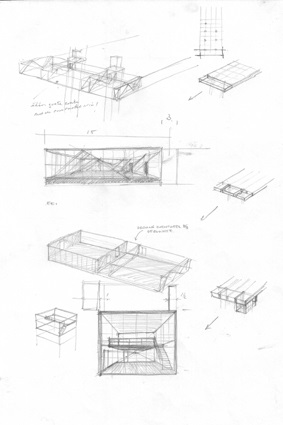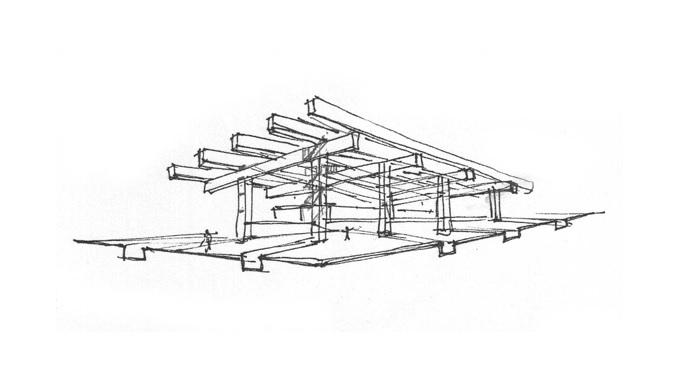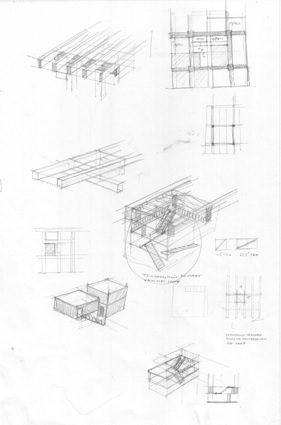When things get extremely busy, there is always lots of ‘news’ to share, but no time to write about it. But what would have been considered news a little while back is far less interesting so long after the fact. Building-related developments have kept us incredibly busy. As an indirect result, I was asked by Hans Woerlee, owner of PFC2 (developer), to help come up with a project for the timber ports in Amsterdam. It is an enormous project, with tens of thousands of square metres earmarked for development.
One thing is certain: if you develop a project like this during such turbulent and uncertain times as these, you’re going to be left with plenty of metres to spare. So we came up with the idea to construct and pay for a roof in phases, like old port construction, in which anything can and will happen along the way and nothing is set in stone beforehand. In other words, an approach that would include the necessary flexibility for developments yet to come.
It sounds (and is) a logical – albeit unorthodox – approach, since, normally, construction is carried out and planned based on certainties. It turns out we are not the only ones who see the absolute absurdity and incredible dullness of carrying out such large-scale plans based on supposed certainties. Thanks to the nerve-wracking times in which we live, flexibility can even be found for plans in which uncertainty is both facilitated and forms a point of departure. Times have changed indeed.
Space will be leased and sold under the roof, where people can chase their own dreams and we can once again dream about dreaming carpenters, bankers, game developers, architects, bakers, headmasters, entrepreneurs, shipbuilders, and so on and so forth, all with their own unique identity. Interestingly enough, Hans Woerlee took almost no time at all to embrace the idea. Not only that, but the port authorities, building aesthetics committee and, in fact, everyone we have dealt with to date has supported our idea. Facilitating uncertainty in a well-organised manner offers more certainty than building based on contrived certainty.
But I must admit it does make me a bit nervous. After all the talking has ended, the building and development plan still have to be realised. The goal is a design that resolves usability problems, a structure built in a sophisticated, consistent and almost rigid manner, a project that is aimed at creating flexibility that allows for future development. Fortunately, I’m not alone in this. We’re working together with engineers and builders, not your usual building contractors but companies normally involved in the offshore industry and that are used to carrying out enormous projects.

This post is also available in: NL
« Back to blog
